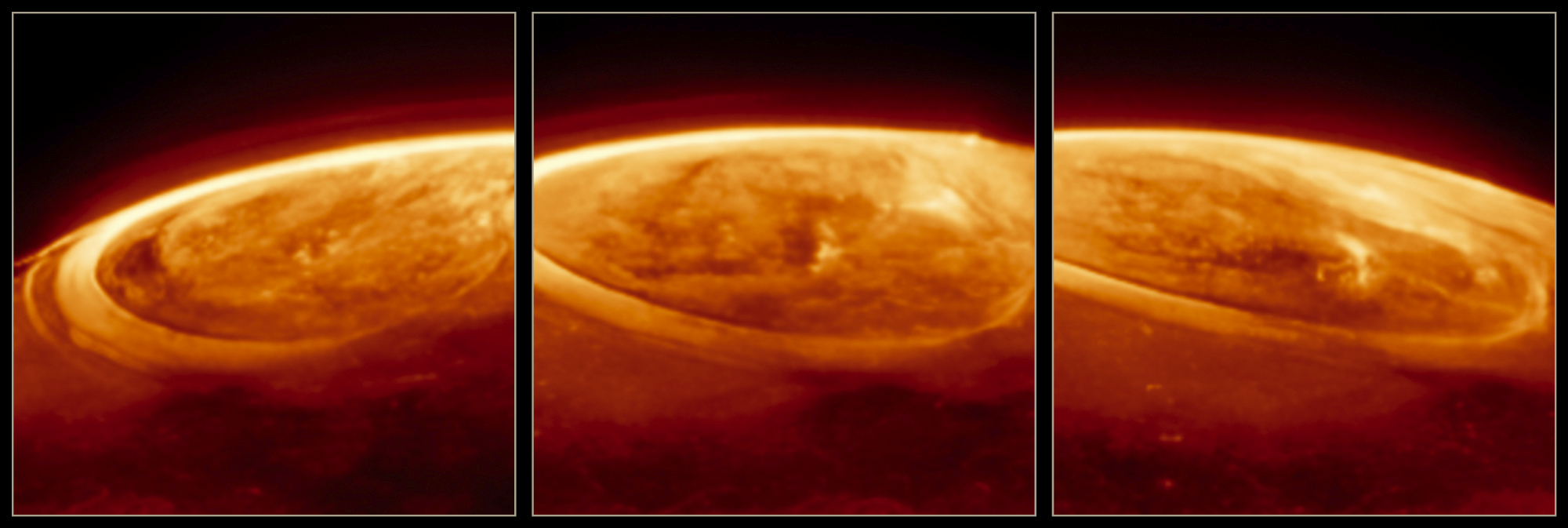Here on Earth, we sometimes experience beautiful glowing auroras due to the sun’s activity — best known as the Northern Lights. But Earth isn’t the only planet to experience this phenomenon, as auroras are also seen on planets like Mars and Neptune too. Now, the James Webb Space Telescope has captured a stunning example of this phenomenon in action on Jupiter, where the light show of the auroras is hundreds of times brighter than it is on Earth.
Auroras happen when energetic particles from the sun interact with a planet’s atmosphere, and they are typically seen around the planet’s magnetic poles. Observing the effect on Jupiter is not only visually striking, but it is also a way for astronomers to learn about the huge and complex magnetosphere of Jupiter.
The auroras were spotted when Webb was taking observations on December 25, 2023 — Christmas Day — though the analysis has only just been released.
“What a Christmas present it was – it just blew me away!” said lead researcher Jonathan Nichols of the University of Leicester, UK. “We wanted to see how quickly the auroras change, expecting them to fade in and out ponderously, perhaps over a quarter of an hour or so. Instead, we observed the whole auroral region fizzing and popping with light, sometimes varying by the second.”

Jupiter’s auroras are a little different from those on Earth, as they aren’t only formed from solar storms — they are also given a boost by the planet’s strong magnetic field, which pulls in charged particles from both the sun and from its moon, Io, which is covered in volcanoes. As these volcanoes spew matter out into space, they are thrown with enough force to escape the moon’s gravity and end up pulled into Jupiter’s orbit. When these particles are pulled in and accelerate due to the planet’s massive gravity, they hit Jupiter’s atmosphere at high speeds, creating the glowing effect in the atmospheric gases.
There are still plenty of questions about the auroras on Jupiter though. The researchers are stumped by differences in observations between the Webb and Hubble space telescopes, which observe at different wavelengths but seem to show different patches of brightness.
“What made these observations even more special is that we also took pictures simultaneously in the ultraviolet with NASA’s Hubble Space Telescope,” said Nichols. “Bizarrely, the brightest light observed by Webb had no real counterpart in Hubble’s pictures. This has left us scratching our heads. In order to cause the combination of brightness seen by both Webb and Hubble, we need to have a combination of high quantities of very low-energy particles hitting the atmosphere, which was previously thought to be impossible. We still don’t understand how this happens.”
Services Marketplace – Listings, Bookings & Reviews
